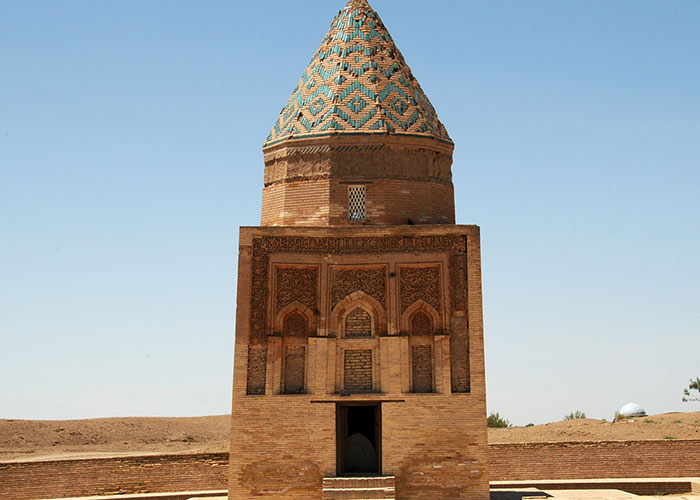Turkmenistan general information.
The Republic of Turkmenistan is a closed country to tourists. Not every foreign citizen is able to get a visa even with a great desire to visit this little-known country.
Turkmenistan's ancient history is characterized by powerful civilizations, namely, the Silk Road, the traces of the Jurassic dinosaurs, legends and mysteries of the ancient caves, the "Gates of Hell", and centuries-old forests, deserts, green forests, lakes, and high waterfalls.
The state has an area of over 491.2 million sq. km.
It shares borders with the Republic of Turkmenistan, Iran, Kazakhstan, Afghanistan, and Uzbekistan. In addition, it has a border point not far from the Caspian Sea, where it shares borders with such countries as Azerbaijan and Russia.
Here are the biggest in the world's desert, Karakum, which translated means "black sands". This desert occupies the largest area of the entire territory, occupying 80% of the land.
There is also a mountain range called "Kopetdag." Its highest point is 2942 meters above sea level. This place is called Mountain Riza.
The climate of Turkmenistan is considered sharply continental and very dry. The average winter temperature reaches -5C, and in the summer it reaches + 32C. However, there are exceptions when the temperature can fall in winter until -32C and increase in summer to + 49C.
It is estimated that the population that lives in the country is more than 5 million. Most of the people, of course, comprise the Turkmen (81%). In total, throughout the country, there are more than 16 nations.
Most of the country's population is Muslim (90%).
The official languages are Turkmen and Russian, and the language is the language of international communication.
The lawfully elected President of Turkmenistan is regarded as the most important representative body of power, and the most important representative body of power is regarded as the Halk maslahati, which translates as "People's Council."
General information
Independence Date: October 27, 1991
Capital: Ashgabat;
Ashgabat, Dashoguz, Turkmenabat, Balkanabat, Mary, and Turkmenbashi are the major cities.
Area: 491,200 sq. km.
Turkmenistan
International languages: Russian
a population of more than 5 million people;
tm; internet zone
Religion: Islam, Orthodox Christianity,
Manat is the national currency.
The national flag was adopted in the winter of 1992. Turkmenistan's national flag is a canvas in the shape of a rectangle with a green background.Vertically located red and burgundy stripes. There are five stars and a white crescent moon, which are in the upper right corner. The vertical bar contains five gels. Every facet of gel has in mind the carpet pattern.
Green-the earth, red-the air, yellow-light, and white-water. Olive branches: independence of the state; and five stars: the five regions of the country. Crescent - a serene sky.
The coat of arms of the Republic of Turkmenistan is octagonal green, which is bordered by a strip of golden-yellow color. In the center, put a few laps of red and blue, which are separated by a golden yellow border. On the outside of the circuit are the main characters, who symbolize wealth: 7 disclosed cotton bolls, a white crescent and five stars with ears of wheat.
In the middle of the composition is Yanardag (an Akhal-Teke horse), which embodies the best qualities of the breed.
Initially, the blazon had a different shape, but in 2003, it was modified.
National holidays
On January 1, the New Year,
On March 8, International Women's Day,
On March 20-21, Nowruz,
May 9-Victory Day;
On May 18, the Day of Revival, Unity, and Poetry of Makhtumkuli Fraga,
On June 1, International Children's Day,
September 1-the Day of Knowledge and Students;
September 12th is Ruhnama Day.
On October 1-International Day of Older Persons;
On October 27, the Independence Day of Turkmenistan,
The population of Turkmenistan.
According to the final data, the population of the Republic of Turkmenistan is more than 4.5 million people.
The average density of people living in the state is equal to 10.5 people per sq. km.
In the Republic of Turkmenistan, there are representatives of different nationalities. Turkmens make up 85%, Uzbeks 5%, and Russians 4%. Other nationalities: 6% (Persians, Azeris, Armenians, Uighurs, Lezgins, Kurds, etc.).
There is a very high birth rate. In the Republic of Turkmenistan and for the local people, families with many children are considered normal.
Turkmenistan's national currency
The national currency of the Republic of Turkmenistan is the Turkmen manat.
According to the classifier, the national currency of the Republic of Turkmenistan originally had the name "manat", then "New Turkmen manat" and, after that, "new manat." Today, it is referred to as "the new Turkmen manat."
Manat decided to issue it in the autumn of 1993. All banknotes and coins depict Saparmurat Niyazov. Saparmurat Niyazov, the former president of the state, this was before 2009.
Then, the state decided to issue banknotes with new sample values ranging from 1 to 500 manat. They are images of great personalities and ancient historical and architectural monuments of Turkmenistan.
One AZN new sample is equal to 5,000 old manats.
The obverse of the coins, which are absolutely all that are available in the country, shows the Monument of Independence of Turkmenistan.




